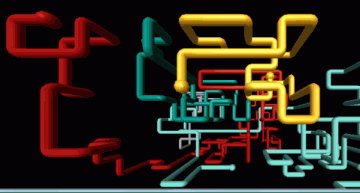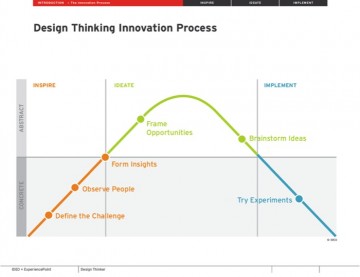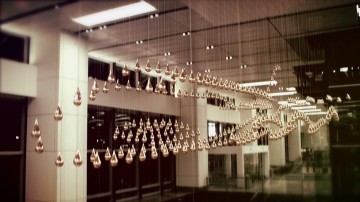Ever wonder what is it like to have technological ideas made into a form of art? ‘Kinetic Rain’, a sculpture made up of 1216 bronze droplets that transforms elegantly into multiple shapes, akin to poetry in motion can be seen in Terminal 1 of Singapore Changi Airport.
Credit: http://www.changiairport.com/at-changi/our-terminals/terminal-1
Just watching this piece of artwork through a video can be breathtaking enough. I cannot say for sure that design thinking is utilized in the process, but I wanted to talk about how the idea of making this could be a form of the design thinking process. At least that’s what I think.
Does seeing ‘Kinetic Rain’ remind you of anything? It certainly reminded me of these kinds of screensavers: The never-ending series of tubes. To me, it is as though the screensaver is made into a physical sculpture. It is as though inspiration has been drawn from these screensavers.

Well, let me introduce to you a design thinking process: Design Thinking Innovation Process. This process is used in an award-winning workshop – Designer Thinker, built in collaboration with Experience Point, the leader in business simulations, and innovation design firm, IDEO. Although this process is used to solve a problem in a simulation game, I feel that it is applicable to the idea of how the sculpture is made. So, I’m just going to focus my thoughts on the ‘Inspire’ section.

‘Design Thinking Innovation Process’ used in ‘Design Thinker’ Workshop
In creating ‘Kinetic Rain’, artists, programmers and technologists were engaged to analyse the space available at Terminal 1 and conceptualise a masterpiece that would be representative of the new terminal. The masterpiece has to fit in with the theme of Terminal 1 – “Tropical City”, where it is about Singapore’s garden city status and where rain, is very much a part of the tropical climate. While upgrading this terminal, the team was mindful that people have fond memories of the terminal including the old sculptures. Keeping that in mind, the team wanted to create an art sculpture, which they found in ‘Kinetic Rain’, that was able “to add the signature touch linking back to Terminal 1’s illustrious past in a new and exciting way.”
Can you see how this blend in with the “Inspire” step? Let me summarize my thoughts.
| The “Inspire” step | Singapore Changi Airport |
| Define the Challenge | Creating a new masterpiece that reflects “Tropical City”. |
| Observe People | People had fond memories of the old terminal. |
| Form Insights | We can create something new, but it has to be a masterpiece that links back to Terminal 1’s illustrious past. |
If you haven’t realized by now, design thinking is very much human-centred or user-centred. We focus our thoughts on what people want to make good decisions. P&G created an online consultation tool because they understood the frustrations of women. Studio H focuses on projects that the community desires. And Singapore Changi Airport did the same.



